TCL QM851G review: the brightest mini-LED TV yet, and a fantastic value
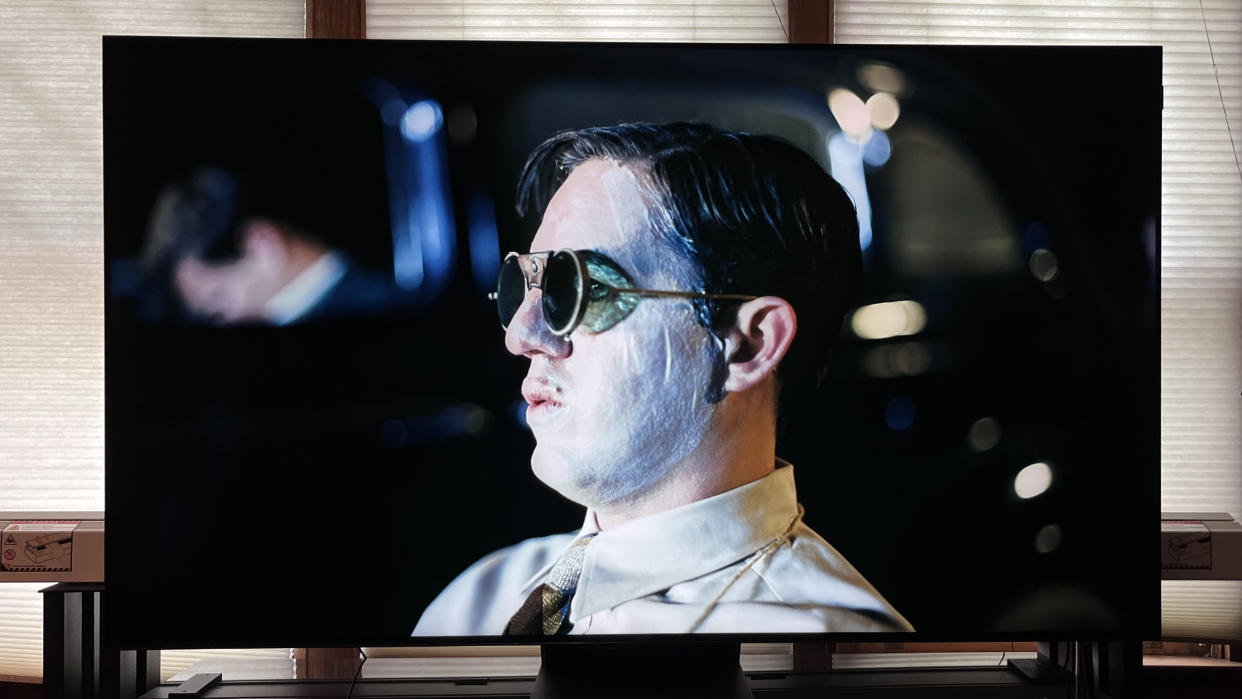
TCL QM851G: Two-minute review
The TCL QM851G is the company’s flagship TV series for 2024 in the US, and as you might expect from a company that likes to go big – a 115-inch TV, the QM89, is also available in the TCL lineup – screen sizes start at 65 inches and extend up to 98 inches.
TCL QM851G series TVs benefit from the company’s Pangu laboratory, the world’s first full-process mini-LED development center, according to TCL, where it oversees “all stages of mini-LED backlight development, from R&D to design, to small-scale trial production.” That lab is the source of the HEXA mini-LED chip design used in the QM851G series, which also features the company’s new AiPQ Ultra processor that allows for 65,000 levels of granular control over local dimming.
The work TCL put into its new flagship TVs has paid off, with the QM851G series making a big performance leap over last year’s also-impressive TCL QM8 Class TVs. A main difference is peak brightness – the 75-inch model I tested hit 2,859 nits in its default Movie picture mode settings when I measured it, though it’s capable of even higher light output. (The previous QM8 Class model I tested maxed out at 2,321 nits in Movie mode.) That’s higher than any of the best TVs we’ve tested so far, including the super-bright 8K Samsung QN900D.
The TCL QM851G’s refined local dimming also delivers the deep blacks and detailed shadows I normally expect to see from the best OLED TVs. This makes it an excellent TV for watching movies, though the QM851G’s high brightness and effective anti-reflection screen also make it a great choice for daytime sports viewing. The TCL’s audio performance is equally impressive, with its 2.1.2-channel speakers delivering clear dialogue and good spaciousness with Dolby Atmos soundtracks.
TCL has fully switched from Roku to Google TV, a reliable and versatile smart TV platform. The QM851G also features both AirPlay 2 and Chromecast built-in support for wireless streaming, works with Alexa, Google Assistant, and Apple HomeKit, and has a built-in mic for hands-free voice commands.
For a comparatively affordable TV, the TCL QM851G has a premium look, with textured edges and a “Fullview 360 Metal Bezel-less” design that takes into account both the TV’s front and back sides. Its connections include four HDMI inputs, including two with 4K 120Hz pass-through plus FreeSync Premium Pro and 144Hz VRR support. Dolby Vision gaming at 4K 120Hz and the lesser-used HDR10+ high dynamic range format are also supported.
The TCL QM851G truly knocks it out of the park when it comes to value. There may be other TVs with better features and performance, but what you’re getting here for the price is nothing short of remarkable.
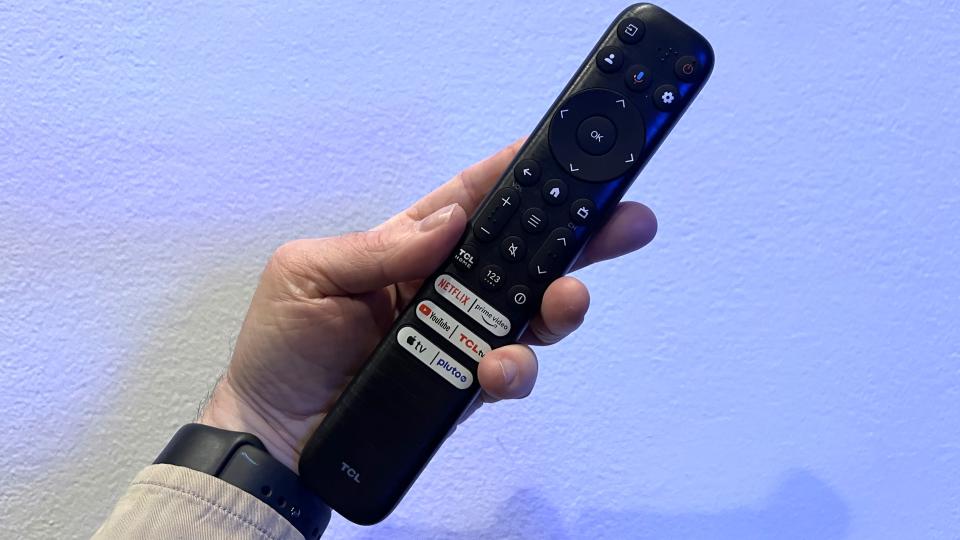
TCL QM851G review: Price and release date
Release date: May 2024
65QM851G: $1,999.99
75QM851G: $2,699.99
85QM851G: $3,999.99
98QM851G: $7,999.99
TCL’s QM851G series was released in May 2024 in screen sizes ranging from 65 up to 98 inches. A 115-inch version with a higher backlight local dimming zone count and a 6.2.2-channel built-in speaker system, the TCL QM89, is also available for $26,999.
Prices for the TCL QM851G dropped quickly following its launch, with the 75-inch version I tested now available for $1,999 or even less.
A similar version of the QM851G series, the TCL X955 series, is available in Europe and the UK and is sold in 85-, 98-, and 155-inch screen sizes.
TCL QM851G review: Specs
TCL QM851G TV review: Benchmark results
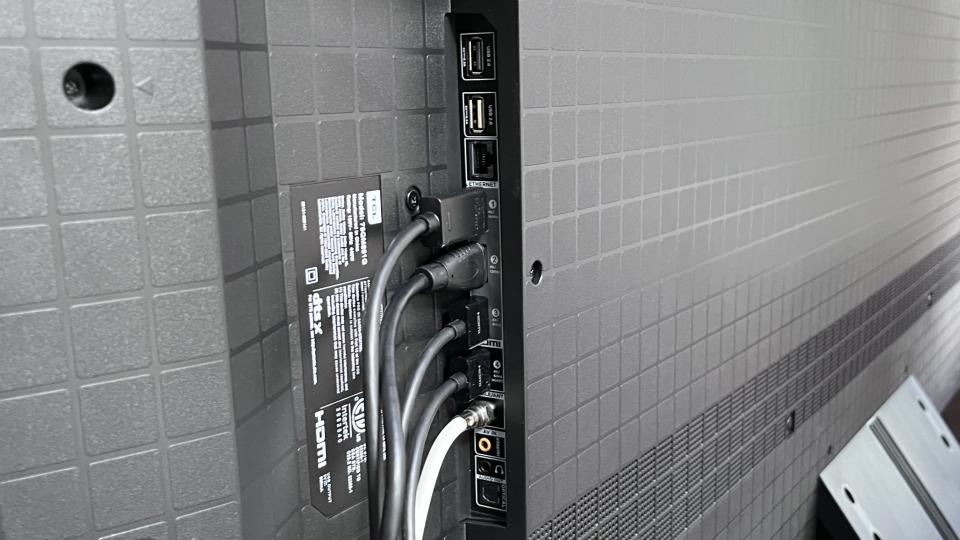
TCL QM851G review: Features
AiPQ Ultra processor
2x HDMI 2.1 inputs with 144Hz support
Built-in ATSC 3.0 tuner
As TCL’s top mini-LED TVs for 2024, the QM851G series features the company’s AiPQ Ultra processor, which provides 65,000 levels of granular control over local dimming. The TVs also feature the company’s HEXA mini-LED chip design, a display panel with an Ultra-Wide-Angle Lens for even light distribution, and Optical Distance Reduction technology to minimize backlight blooming effects by reducing the space between the backlight and the reflector. HDR support includes the Dolby Vision IQ, HDR10+, HDR10, and HLG formats.
An Onkyo-designed 2.1.2-channel speaker system with up-firing Dolby Atmos speakers provides audio on the QM851G series. Along with Dolby Atmos, DTS Virtual:X is supported and the TVs are IMAX Enhanced certified.
TCL QM851G series TVs have a native 120Hz display panel and two HDMI 2.1 inputs with support for 144Hz VRR and FreeSync Premium Pro. A Game Accelerator 240 feature allows for 240Hz VRR gaming at 1080p resolution and there’s a Game mode to reduce latency. The TVs also feature an ATSC 3.0 next-gen TV tuner and Wi-Fi 6.
As with other TCL TVs, the Google TV platform is used for streaming and smart home integration. AirPlay 2 and Chromecast built-in support allows for wireless streaming from phones and tablets, and the QM851G series works with Alexa, Google Assistant (with hands-free voice control) and Apple HomeKit.
Features Score: 4.5/5
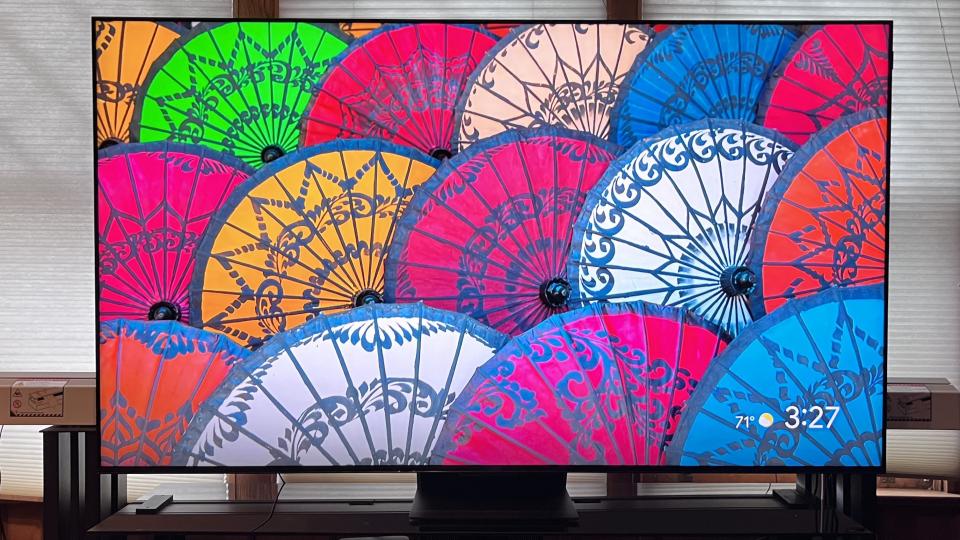
TCL QM851G review: Picture quality
Record-breaking brightness
Anti-reflection screen
Impressive local dimming
My measurements of the 75-inch TCL QM851G confirm it as the brightest TV TechRadar has ever tested, and by a sizeable margin. Peak HDR brightness measured on a 10% white window test pattern was 2,859 nits in Movie picture mode, and full-screen brightness was 801 nits. The TV’s Vivid picture mode yielded even higher peak HDR brightness, measuring 3,583 nits.
The QM851Q performed impressively on other tests. Coverage of the UHDA-P3 color gamut (the color space used for mastering 4K Blu-rays and digital cinema and streaming releases) was 97.4% and BT.2020 coverage was 76.4% – both excellent results for a mini-LED TV. Movie mode was the TV’s most accurate picture preset, with measurements made with Portrait Display’s Calman color calibration software showing average Delta E values of 1.3 for grayscale and 1.2 for color (we typically look for these to fall below 3).
Having such high brightness at my disposal meant I could easily leave the TCL in its default Movie mode settings – the ones used for the measurements – and still have a sufficiently bright picture for daytime viewing with overhead lights on. Watching a high-definition TV broadcast of a Poland vs France Euro 2024 soccer match, the QM851G’s picture looked wonderfully punchy, with the red and blues of the players’ uniforms nicely balanced with the bright green goaltender uniforms and the more muted green of the turf. The skin tones of the players also looked completely natural in Movie mode, giving it a picture-quality advantage over the too-bright Vivid mode.
I continued to be impressed when watching other broadcast and streamed TV channels, mainly due to the TV’s clean and crisp 4K upconversion of standard- and high-definition programs. The TCL’s bright, expansive screen even benefited old shows like Kojak, bringing its 1970s period detail to vivid life.
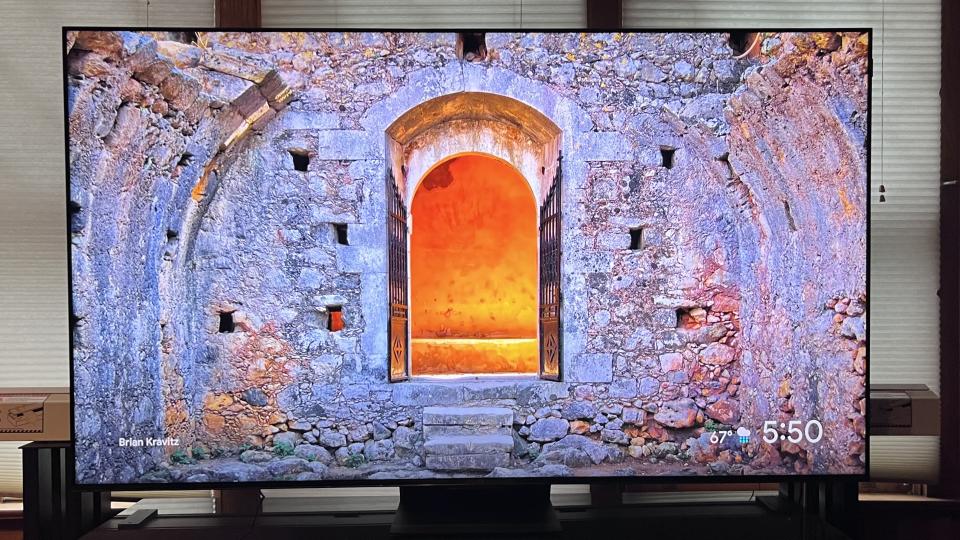
Another thing that makes the QM851G a great TV for sports and daytime TV viewing is its anti-reflection screen, which eliminates screen glare from lamps and undraped windows. Its performance was effective enough that even dark, shadowy shows such as House of the Dragon on Max retained good black depth and contrast even with my room’s overhead lights turned on.
Less great was the TCL’s off-axis performance: colors and contrast were both diminished when viewing from far off-center sets, which is an effect you typically see with budget QLED TVs. Motion handling was also just average, with significant judder levels visible when I watched a scene from the movie No Time to Die where James Bond walks across a cemetery on a craggy hillside. Fortunately, the TV’s Motion menu provides settings to correct for this, offering separate Judder and Blur adjustments.
While the TCL QM851G’s picture has what it takes to impress in bright rooms, it’s no slouch when you dim lights, delivering punchy HDR highlights, along with deep blacks and detailed shadows. Watching a scene where Alicent Hightower speaks with her father, the king’s hand, in House of the Dragon season two, episode one, blacks in the dark room looked deep and plenty of detail could be seen in the shadows. Flickering candles throughout the room also looked powerfully bright, giving the picture a strong dimensional quality.
Turning to 4K Blu-ray disc, I watched the Trinity test scene from Oppenheimer. The nighttime sky had a deep, uniform black tone and the lights illuminating the compound poked through with an almost arresting level of brightness. The orange and red hues of the resulting fire cloud when the bomb is detonated looked incredibly vivid, lighting up my dim room as if the explosion was unfolding in front of me.
Overall, I’d characterize the QM851G's local dimming as excellent, with very few instances of backlight blooming even on tough scenes like this one. Compared to the Sony Bravia 9 mini-LED TV, however, the Sony had an edge on the TCL when it came to backlight control, with the benefits mostly visible in scenes like the aforementioned one from House of the Dragon, which displayed a more subtle range of black-to-gray tones in shadows.
Picture quality score: 4.5/5
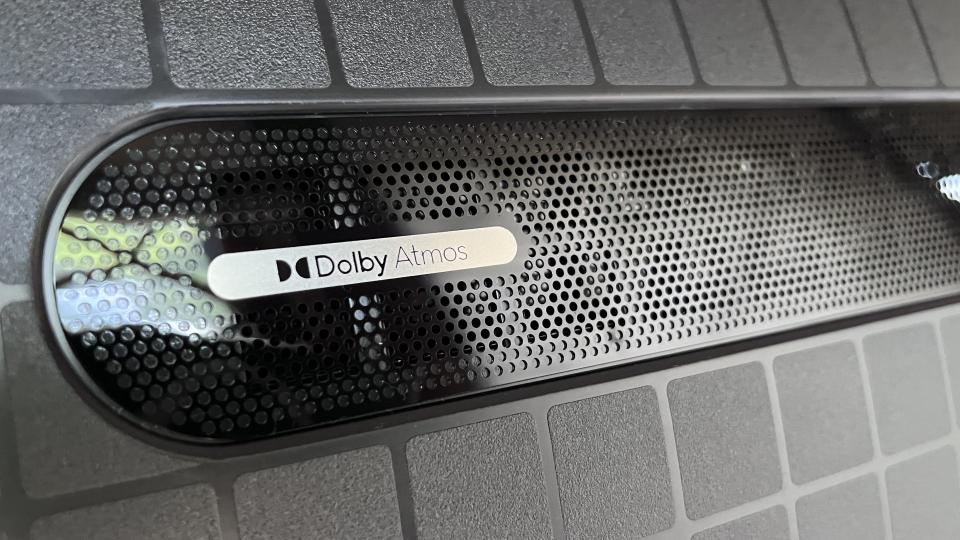
TCL QM851G review: Sound quality
2.1.2-channel Dolby Atmos speaker system
Extensive sound adjustments
Above-average TV sound quality
The TCL QM851G’s Onkyo-designed 80-watt, 2.1.2-channel speaker system features two up-firing Dolby Atmos speakers located at the left and right sides of the TV’s back surface. Both Dolby Atmos and DTS Virtual:X are supported and the TV is also IMAX Enhanced certified.
Menu settings for adjusting sound include seven preset modes and surround virtualizer, bass, dialogue, and definition enhancer adjustments. There’s also an auto volume control that levels out audio to prevent sudden volume boosts – from TV commercials, for instance.
Sound quality on the QM851G gets a noticeable boost over last year’s TCL QM8, which had comparatively anemic 20-watt, 2.1-channel speakers. Watching Dune: Part Two, the dialogue was crisp, yet natural-sounding and it projected well out into my room. Music and bass effects had a good degree of heft, and there was a distinct sense of ambiance to Dolby Atmos soundtracks.
Of the TV’s seven sound presets, the best was Movie, which boosted the bass to a level that added real dramatic impact to a scene where Paul Atreides and Chani lead an attack on a Harkonnen ship. The TCL doesn't rival even budget versions of the best Dolby Atmos soundbars when it comes to movie sound, but the QM851G’s built-in speakers provide well-above-average performance.
Sound quality score: 4.5/5
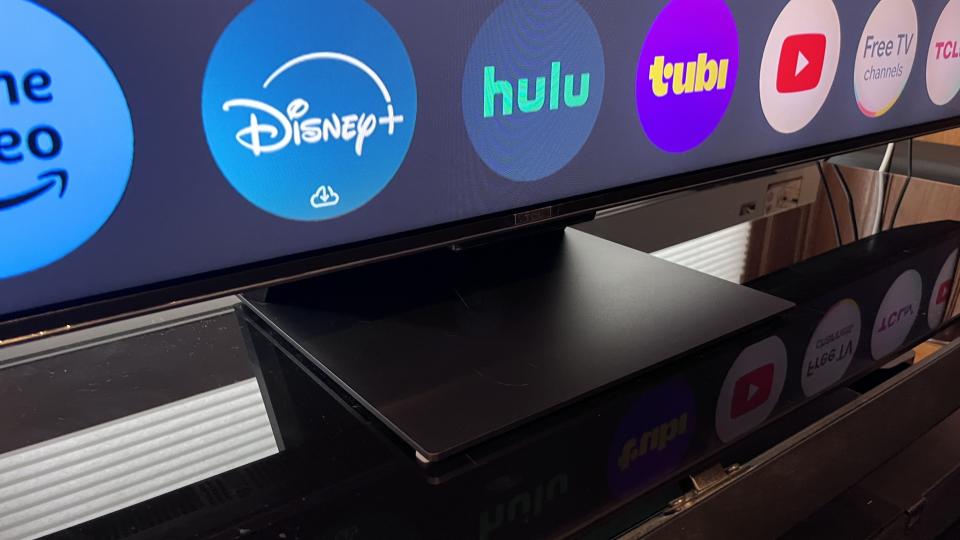
TCL QM851G review: Design
Fullview 360 Metal Bezel-less design
Four HDMI ports (2x HDMI 2.1)
Fully backlit remote control
TCL QM851G series TVs sport the company’s “Fullview 360 Metal Bezel-less” design. As that name suggests, a thin bezel gives the TV an all-picture look from the front. Design consideration also extends to the sides with their textured metal surface, and the back, which has a curved plastic casing with a polished look. The 65 and 75-inch screen sizes feature a basic aluminum plate pedestal stand, and the 85- and 98-inch models come with adjustable-height support feet.
Connections on the QM851G series include four HDMI 2.1 (two HDMI 2.1 with up to 144Hz support) and three USB ports, an antenna input for the TV’s ATSC 3.0 tuner, a 3.5mm composite video and stereo audio input, and an optical digital audio output. There’s also an Ethernet port and a 3.5mm audio output for connecting headphones.
TCL's long, slender remote control has a fully backlit keypad and includes buttons to directly access Netflix, Prime Video, Apple TV Plus, YouTube, and more. A built-in mic lets you control the TV with voice commands when pressed, and you can also enable hands-free voice commands by turning on the TV’s built-in mic in the setup menu.
Design score: 4/5
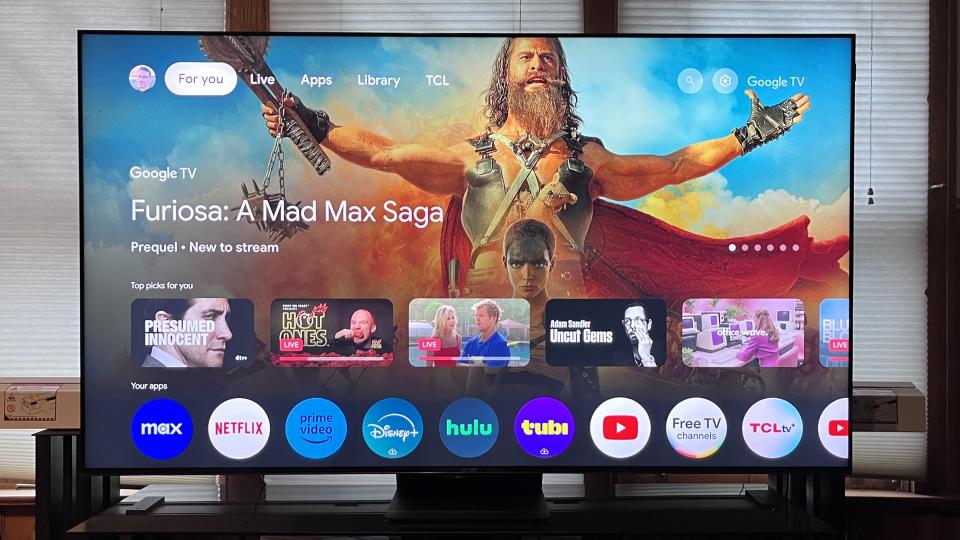
TCL QM851G review: Smart TV and menus
Google TV with hands-free voice assistant
AirPlay 2 and Chromecast built-in support
Extensive picture and audio settings
Starting with its 2023 models, Google TV became the exclusive smart TV platform for TCL TVs in the US (a Roku TV option was previously available). This software is divided into different tabs on the home screen: For you, Live, Apps, Library, and TCL. "For you" shows a horizontal row of the streaming apps you’ve added, along with "Top picks for you" content recommendations based on your previous viewing and Google search history. Live provides a program grid that can be populated with either free-to-stream channels, or broadcast TV ones pulled in by the set’s ATSC 3.0 tuner.
Google TV's streaming service support is basically as good as it gets, and it's quick and easy to get to the apps you need, or to pick up a show where you left off.
Other streaming options include AirPlay 2 and Chromecast built-in support for wireless streaming from phones and tablets. The QM851G also works with Alexa, Google Assistant, and Apple HomeKit, and can be operated hands-free using voice commands when the built-in mic is enabled.
Picture settings and other adjustments are accessed by pressing the gear icon on the TV’s remote control, and more in-depth settings can then be accessed by selecting another gear icon from the onscreen menu. A Local Contrast adjustment gives High, Medium, and Low options for backlight local dimming (I left this at High), and there are also Clarity and Motion menus with extensive settings for adjusting detail and noise reduction, along with blur and judder reduction.
Getting to controls such as picture mode or brightness took several button pushes, however, making me wish there was some kind of quick menu pop-up to provide easy access to basic controls.
Smart TV & menus score: 4/5
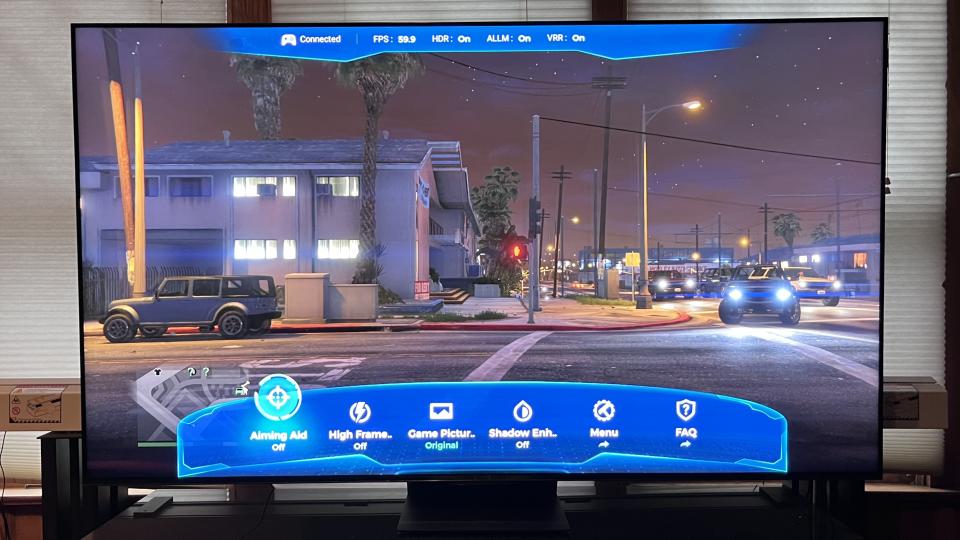
TCL QM851G review: Gaming
2x HDMI ports with 4K 120Hz, VRR up to 144Hz support
240Hz gaming at 1080p resolution
14.9ms measured input lag
Gaming features on TCL QM851G series TVs include two HDMI inputs with support for 4K 120Hz, plus FreeSync Premium Pro and 144Hz VRR. TCL’s Game Accelerator 240 feature enables 240Hz gaming at 1080p resolution, and 4K 120Hz Dolby Vision gaming is supported.
A Game Master setting can be configured in the setup menu to automatically switch the TV to Game mode when it detects a source such as an Xbox Series X or PS5 console. When in Game mode, a game bar menu can then be accessed to make quick onscreen adjustments to gaming-specific picture modes, shadow enhancement, an aiming aid, and other features.
The TCL’s input lag measured with a Bodnar 4K input lag meter was 14.9ms. That amount is slightly higher than what we’ve measured on some of the best TVs for gaming, though it’s low enough that all but professional gamers should be happy with the QM851G’s gaming performance.
Gaming score: 4/5
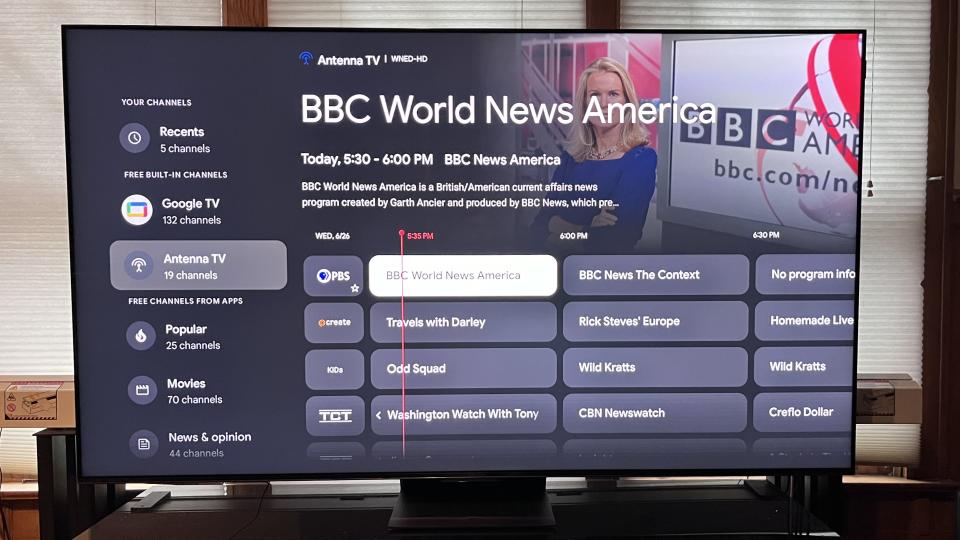
TCL QM851G review: Value
Fantastic value
Prices have dropped since launch
Costs less than traditional premium TV options
The 75-inch version of the TCL QM851G that I tested was $2,699 at launch and has now broadly dropped to under $2,000, while the 65-inch version is now selling for as low as $1,398. Considering the TCL’s features and excellent overall performance, those are incredible prices.
Looking at the 75-inch mini-LED TV competition for 2024, the Sony Bravia 9 is currently selling for $3,499, the Samsung QN90D for $2,999, and the Hisense U8N for $1,499. Along with reviewing the Sony Bravia 9, I did a hands-on test of the Samsung QN90D, and while that TV is also a brightness beast with excellent picture quality, I can’t say that its two-times price premium over the TCL is justified.
Value score: 5/5
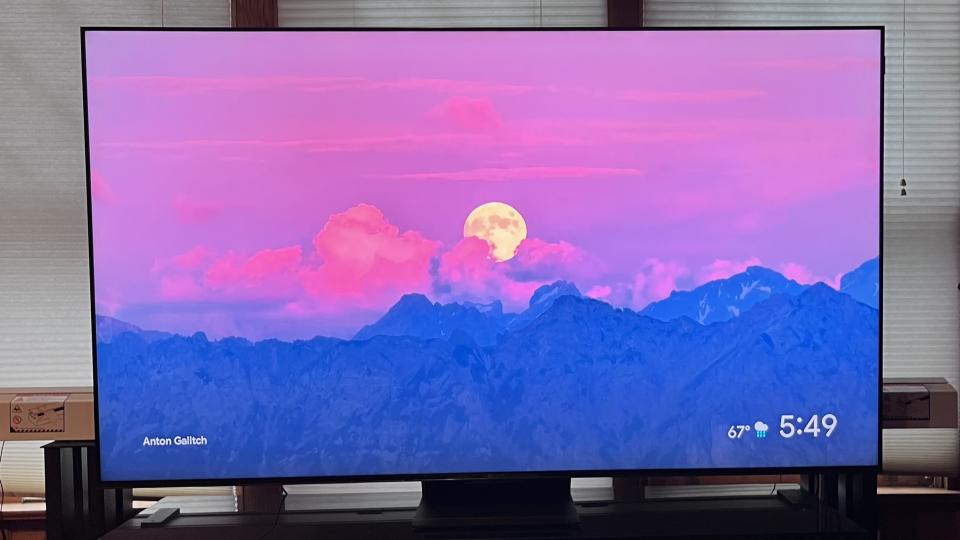
Should I buy the TCL QM851G TV?
Buy it if...
Don't buy it if…
Also consider...
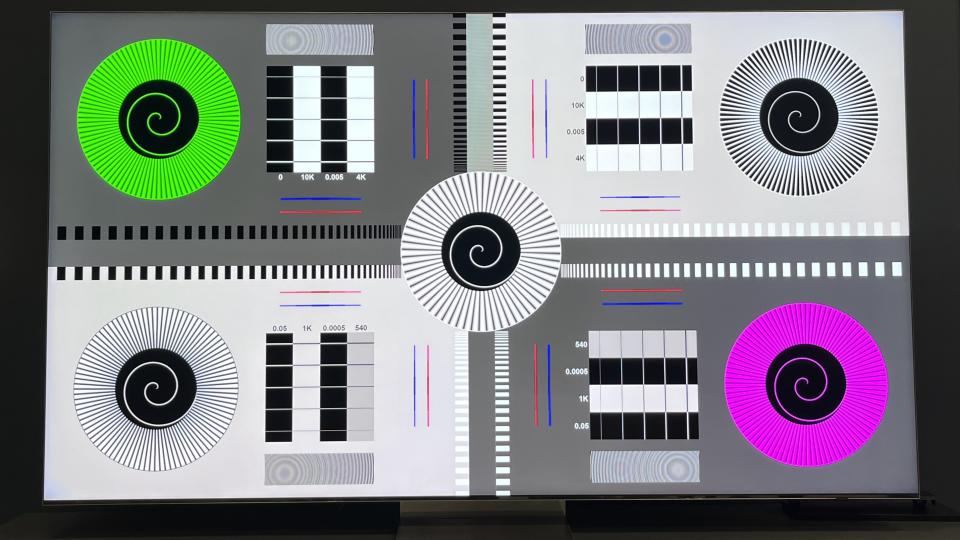
How I tested the TCL QM851G TV
Tested over two weeks
Measurements made using Calman color calibration software
Movie picture mode used for subjective tests
When I test TVs, I first spend a few days or weeks of casual viewing to assess out-of-box picture presets and familiarize myself with its smart TV menu and picture adjustments. I then select the most accurate preset (typically Filmmaker Mode, Movie or Cinema) and measure grayscale and color accuracy using Portrait Displays’ Calman color calibration software. The resulting measurements provide Delta-E values (the margin of error between the test pattern source and what’s shown on-screen) for each category, and allow for an assessment of the TV’s overall accuracy.
Along with those tests, I make measurements of peak light output (recorded in nits) for both standard high-definition and 4K high dynamic range using 10% and 100% white window patterns. Coverage of DCI-P3 and BT.2020 color space is also measured, with the results providing a sense of how faithfully the TV can render the extended color range in ultra high-definition sources.
For the TCL QM851G, I used the Calman ISF workflow to assess its picture accuracy, which was outstanding in the default Movie mode, requiring no advanced calibration. I also watched a range of reference scenes on 4K Blu-ray discs to assess the TV’s performance, along with 4K HDR shows and movies streamed from Max, Netflix, and Hulu.
You can read an in-depth overview of how we test TVs at TechRadar at that link.
First reviewed: June 2024
